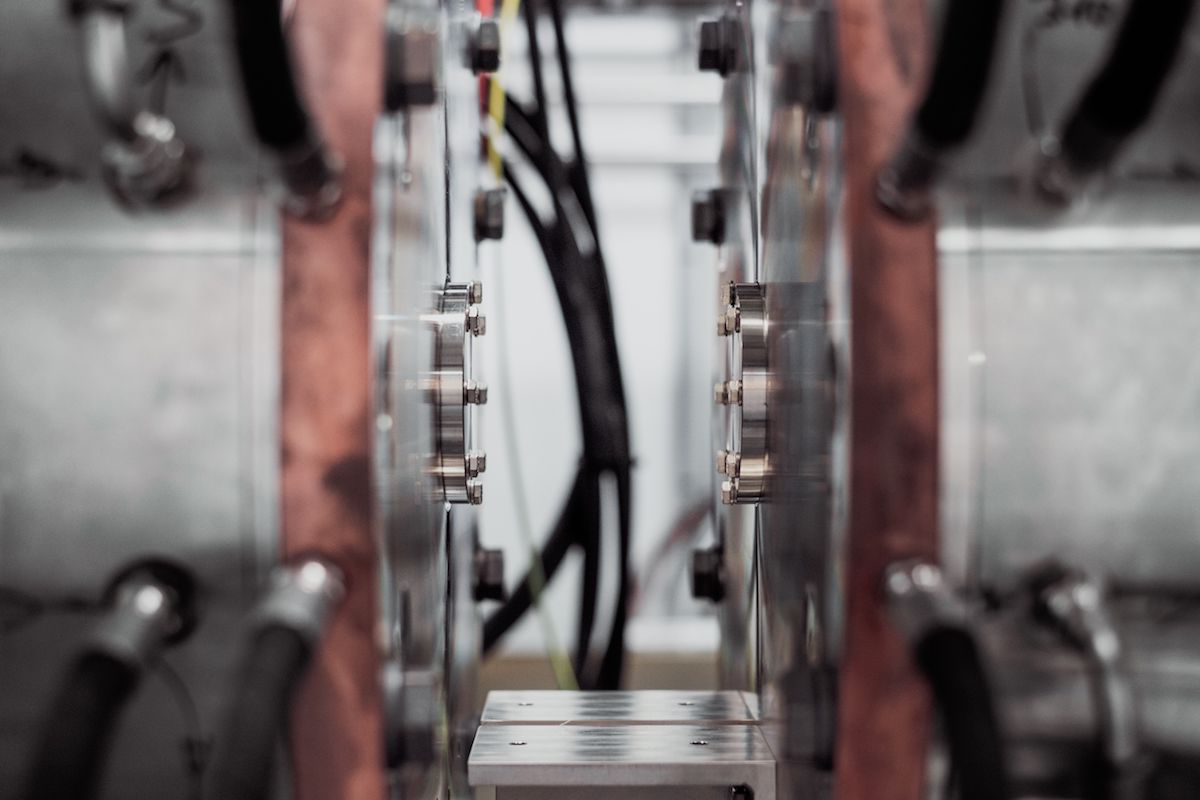Now, processes are digitized. Designs are completed in 3D CAD files, digital twins exist to mirror the objects they're building and everything connected via the internet of things. Drawings aren't handed down to the shop floors in books — rather, they're being sent to tablets built specifically for that purpose.
Finally, the paperless office has arrived in factories … that isn't quite true, but we are well on the road.
Today, we're going to look at how digitization is transforming manufacturing, and what it means for the businesses in the industry.
What is digitization?
We've covered this before - digitization is NOT digitalization or digital clause. It's a precursor of both those activities.
Simply put, it's the process of taking non-digital formats of information and turning them into digital formats.
Mail into email, spreadsheets into Excel, typewriters into Google Docs, clay models into CAD files — the list goes on.
The key is that the processes and systems stay the same when processes are digitized.
For instance, if your process is to get a signature on a design to approve it for the manufacturing floor, then the digitization process might be an e-signature on the CAD file.
That's digitization. So how does it transform the manufacturing industry?

1. Manufacturing will move a lot faster
The first thing we're seeing as digitization transforms the manufacturing industry is the speed of manufacturing. Driven by rapidly changing consumer tastes and an accelerated pace of new product introduction/innovation, manufacturing needs to figure out the best way to adapt.
Digitization gives an instant boost to productivity, allowing projects to move faster and manufacturers to hit more aggressive deadlines.
Specifically, manufacturers will be able to rapidly move from design to floor and back again as changes come through from the engineering team.
Right now, this process is extremely manual in many circumstances. 3D designs are converted into 2D spec books, and then those books are delivered to machinists on the floor who review and "redline" (literally mark up) the books.
Then those books are returned to engineering teams for revisions.
And within that process is a lot of inefficiencies:
- Printing a spec book might take hours with complicated designs
- Delivering is fine if the floor is below you. But what do you do when the factory is half a world away?
- Redlining need to be done page by page, rather than simply reviewing the changes
And of course, the whole process is manual. There's no auto-check and no opportunity for further innovation to optimize the process.
Digitization makes this process more efficient by solving these problems. And, as we're about to see, opens the door for modern manufacturing innovation.
2. Digitization is the greatest step towards the Industrial Internet of Things (IIoT)
The Industrial Internet of Things is a dream of a total product data loop.
First, machines are loaded with sensors when they're built. Then, those sensors provide continuous feedback throughout the manufacturing supply chain. In response to real-world data about things like maintenance requirements and wear and tear, the manufacturing process can be refined.
Some refinement happens automatically (machine-to-machine communication) but some data is fed into business intelligence (BI) tools and dashboards, giving people the ability to find efficiencies.

The crux of this whole process, however, is data. Data that can be collected and leveraged on a truly staggering scale.
And that data can only be reasonably collected and managed if it's an entirely digital product:
- Designs can be changed automatically in response to environmental challenges
- Changes can be pushed automatically to the manufacturing floor
- Products can be altered as they roll off the line.
Eventually, we may reach a point where automation and AI continuously optimize existing designs in response to real-world circumstances, leaving engineers to focus on the innovation of new products.
3. United manufacturing processes
We mentioned earlier the fact that a major problem of analog processes is that organization struggle if they're manufacturing across multiple locations.
And since the manufacturing is now a global industry, this is a huge problem.
Digitization can offer much-needed relief for global manufacturing value chains for a few reasons.
First, data is easier to share. It's much easier to share files across a network then it is to send files through the mail. Even if the files are sent and then printed out, that's another data translation, and thus another vulnerability for the organization.

Second, follow-the-sun manufacturing is more realistic. When factories moved offshore and engineering consultants started becoming more common (especially in the BRICS countries), for the first time follow-the-sun manufacturing started to be perceived as an attainable reality.
The idea is that as one plant or design office closes for the day, the next one in the time zone over is just opening up. Work can be handed off seamlessly to a new team, and there's never any "downtime" overnight.
However, this is only possible if:
- Organizations can share data essentially in real time across multiple global locations.
- If all the necessary data can be accessed by anyone, at any time.
The second point here is worth looking into. One reason follow-the-sun is so difficult is that we overlook how important it is to ask for help. Especially at engineering handoff points, when clarification is so often needed. That's not possible under-follow-the sun methodology, so it's imperative that all the information is conveyed the first time.
Digitization can help both with simple clarity but also with process enforcement. For example, specifying that every field in a form needs to be completed. While it's not perfect, with digitization, you have levers you can pull to increase compliance.
4. Rapid iteration will become the norm
Digitization won't only make manufacturing faster. One thing we're already seeing is it driving innovation through rapid product iteration.
Better data sharing across divisions, organizations, and software suites via APIs will only fuel this iteration speed.
By flattening silos and enabling data to be accessed in real time, anywhere in the world, organizations are poised to act on innovation trends, market opportunities, and consumer demands like never before.
Summary
Digitization isn't the end of the story of digital transformation as we move to industry 4.0.
But it is a critical start. Once processes are digitized, then additional technologies like machine learning, AI, IIoT, digital twins, and a comprehensive, complete product lifecycle can emerge.
But we have to take the first step and put down our pens.
